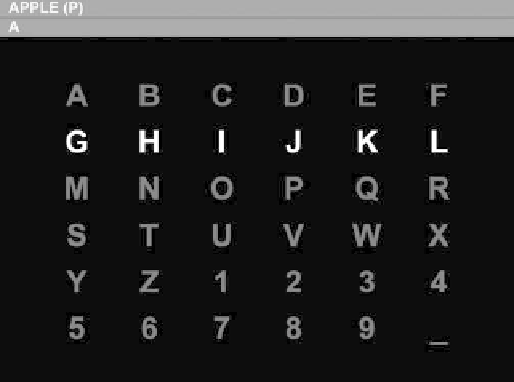Biomedical Engineering Reference
In-Depth Information
long-term reliability of BCIs, and although there are studies that demonstrated the influence
of mood and motivation on BCI performance (Nijboer et al. 2010), we do not know whether
the use of such a technology may or may not improve the quality of life. Several studies
have shown that ALS patients with adequate care and basic communication systems have
a reasonable quality of life (Simmons et al. 2000; Robbins et al. 2001; Lulé et al. 2009; Matuz
et al. 2010).
17.4.2 Development
The first published “mental prostheses” was the P300 Speller developed by Farwell and
Donchin (1988). This system, which is still used in many applications, records the P300
event-related potential. This potential is a positive deflection of the EEG 300-ms post-
stimulus, and it is elicited by focusing the attention on a series of stimuli events, with
some rare or unexpected stimuli. The P300 Speller uses this procedure, which is called the
“oddball paradigm,” intensifying random rows and columns of a matrix containing the
letters of the alphabet and other commands (see Figure 17.2). When the patient wishes to
communicate, he/she focuses attention on a letter of the matrix. In this way, the content
becomes relevant and rare (in a 6 × 6 matrix, 12 intensifications occur but only 2 identify a
single cell, 1 for the row and 1 for the column), thus eliciting a P300 potential.
Several applications based on the P300 Speller were built for communication and
entertainment, and it is currently one of the most used BCIs. Studies on the P300 Speller
for communication (Donchin et al. 2000) and on its use to control Internet browsers and
e-mails (Karim et al. 2006; Bensch et al. 2007; Mugler et al. 2008, 2010), painting applications
(Münbinger et al. 2010), and real and virtual environments (Bayliss 2003; Cincotti et al.
2009), were published.
Using a different technique, Birbaumer and colleagues were the first to provide an
experimental verification of the use of a BCI to communicate with ALS LIS patients
FIgUre 17.2
(See color insert.)
The P300 signal is elicited by focusing attention on a series of stimuli events, which comprise
rare, unexpected or relevant stimuli. In order to create this effect, the P300 Speller randomly intensifies rows
and columns of the matrix containing the letters of the alphabet and other commands. When the patient wishes
to communicate something, he/she focuses attention on a cell of the matrix while the rows and columns are
intensifying.

